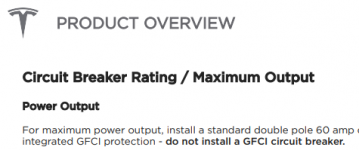Those are EVSEs, not chargers. And the 48A ones don’t come with a 14-50P.
The charger is in the car and it controls the charge rate up to what the EVSE tells it is available.
You should review how the J1772 standard works. A user cannot make a car charge at a rate exceeding the hardware in the car.
Quote from one Amazon model:
"The Emporia EV Charging Station is a Level 2 electric vehicle charger that charges any EV up to 40 amps with 22" NEMA 14-50P or up to 48 amps with hardwired installation. It comes with a 24’ cable with an SAE J1772 connector so it works with all electric cars. Its watertight NEMA Type 4 enclosure is made to withstand the elements outdoors."
Set up commissioning procedure is in an app that simply asks if this unit is hard wired or plug in.
Had customer with this. He had total control over Rated Amp (no installer control) on set up it simply asked is it hard wired or plug in. HO actually suggested that it be wired at the lower rating to save money and he would just change the setting to "hard wired" to take advantage of the higher speed. Of course told him no and hard wired to 60A/48A capacity.
Everyone I've dealt with requires a WIFI connection. This Emporia will stay defaulted to the last setting with loss of WIFI. Charge Point and Enphase Default to lowest setting 16A with the loss of WIFI.
A user cannot make a car charge at a rate exceeding the hardware in the car.
Will partially disagree. Can make it to exceed the wiring. This charger (EVSE) will charge up to the capacity inputted into the App. Experimented with it. Time for charge of vehicle changed based on inputted Amperage. 32A was 8hr, 40A was 5-6hr, 48A dropped to almost 3 and a half hour. Charger was put onto a Toyota Highlander PHEV.
Meeting with a Stellantis' Corp EV trainer rep. Speaking on their Specs and requirements. They actually have a requirement that owners limit use of the road side level 3 80A rapid chargers as it would cause plaquing issue within the Battery cell with repeated continuous use of the level 3 charger. Acknowledged the development of even higher level 2 chargers would be similarly detrimental to the vehicle batteries.
The basic is that the battery via onboard system will accept a high rate of charge for the first 80% of battery capacity then internally will throttle back the charge until full charge is achieved.

